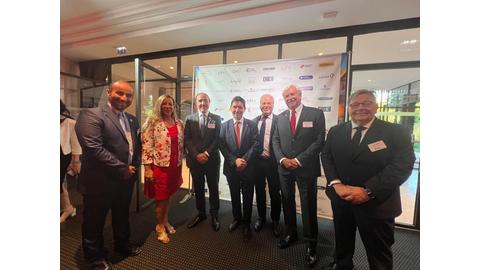US consumer confidence surges

WASHINGTON: US consumer confidence rebounded by the most in 17 years in September amid an improvement in labour market views, but it remained below levels that prevailed before the Covid-19 pandemic struck the nation early this year.
The surge in confidence reported by the Conference Board yesterday came despite a resurgence in new coronavirus cases in some parts of the country and government help for businesses and the unemployed drying up. Consumers also appeared to shrug off growing uncertainty ahead of the November 3 presidential election and signs the economy’s recovery from the recession was slowing.
“While today’s figure is on the face of it a fantastic result, we have to remain a little cautious given the mixed evidence from other sources,” said James Knightley, chief international economist at ING in New York.
The Conference Board’s consumer confidence index increased 15.5 points to a reading of 101.8 this month. That was the largest gain since April 2003. Economists polled by Reuters had forecast the index edging up to a reading of 89.5 in September. The index was at 132.6 in February.
The cutoff date for the survey was September 18. The jump in the Conference Board’s confidence index is at odds with a modest increase in the University of Michigan’s consumer sentiment gauge. Economists said the rise in the Conference Board measure was driven by higher-income households, who have been least affected by unemployment during the pandemic.
“High confidence today reflects reopened activity but also policy’s success in ring-fencing the impact from the loss of activity. This is not the moment to open the gates,” said Steve Blitz, chief economist at TS Lombard in New York. “It underscores the recession’s narrow impact.”
The survey’s present situation measure, based on consumers’ assessment of current business and labour market conditions, increased to a reading of 98.5 from 85.8 in August. The expectations index based on consumers’ short-term outlook for income, business and labour market conditions jumped to 104.0 from a reading of 86.6 in August.
The survey’s so-called labour market differential, derived from data on respondents’ views on whether jobs are plentiful or hard to get, improved to a reading of 2.9 this month from -2.2 in August. That measure closely correlates to the unemployment rate in the Labor Department’s employment report. It has dropped from as high as 38.3 in August last year.
Consumers were upbeat on their income prospects.
Stocks on Wall Street were trading lower ahead of the first presidential debate. The dollar fell against a basket of currencies. US Treasury prices rose.
New daily Covid-19 cases started spiking last week for the first time in eight weeks. Government programmes to help businesses with wages have almost lapsed, and tens of thousands of airline workers are facing layoffs or furloughs in October.
A $600 weekly unemployment benefits supplement ended in July and was replaced with a $300 weekly subsidy, whose funding is already running out.
“Households are becoming more optimistic on the labour market and income front, which should support consumer spending in the coming months,” said Kathy Bostjancic, chief US financial economist at Oxford Economics in New York. “However, the possibility that increased unemployment benefits could expire serves as a strong countervailing force.”
Source: http://www.gdnonline.com/Details/873269


